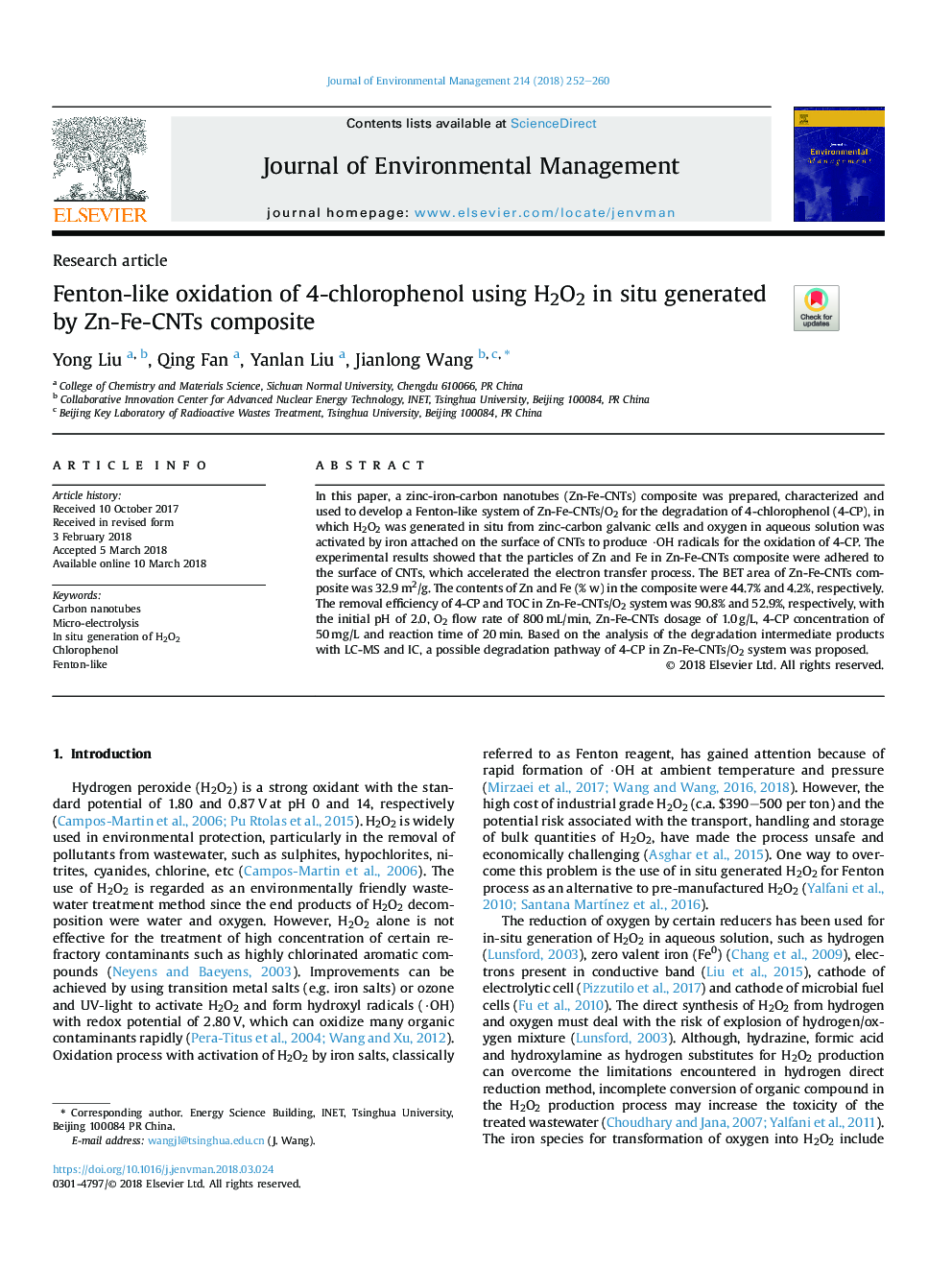| Article ID | Journal | Published Year | Pages | File Type |
|---|---|---|---|---|
| 7477710 | Journal of Environmental Management | 2018 | 9 Pages |
Abstract
In this paper, a zinc-iron-carbon nanotubes (Zn-Fe-CNTs) composite was prepared, characterized and used to develop a Fenton-like system of Zn-Fe-CNTs/O2 for the degradation of 4-chlorophenol (4-CP), in which H2O2 was generated in situ from zinc-carbon galvanic cells and oxygen in aqueous solution was activated by iron attached on the surface of CNTs to produce ·OH radicals for the oxidation of 4-CP. The experimental results showed that the particles of Zn and Fe in Zn-Fe-CNTs composite were adhered to the surface of CNTs, which accelerated the electron transfer process. The BET area of Zn-Fe-CNTs composite was 32.9â¯m2/g. The contents of Zn and Fe (% w) in the composite were 44.7% and 4.2%, respectively. The removal efficiency of 4-CP and TOC in Zn-Fe-CNTs/O2 system was 90.8% and 52.9%, respectively, with the initial pH of 2.0, O2 flow rate of 800â¯mL/min, Zn-Fe-CNTs dosage of 1.0â¯g/L, 4-CP concentration of 50â¯mg/L and reaction time of 20â¯min. Based on the analysis of the degradation intermediate products with LC-MS and IC, a possible degradation pathway of 4-CP in Zn-Fe-CNTs/O2 system was proposed.
Related Topics
Physical Sciences and Engineering
Energy
Renewable Energy, Sustainability and the Environment
Authors
Yong Liu, Qing Fan, Yanlan Liu, Jianlong Wang,
